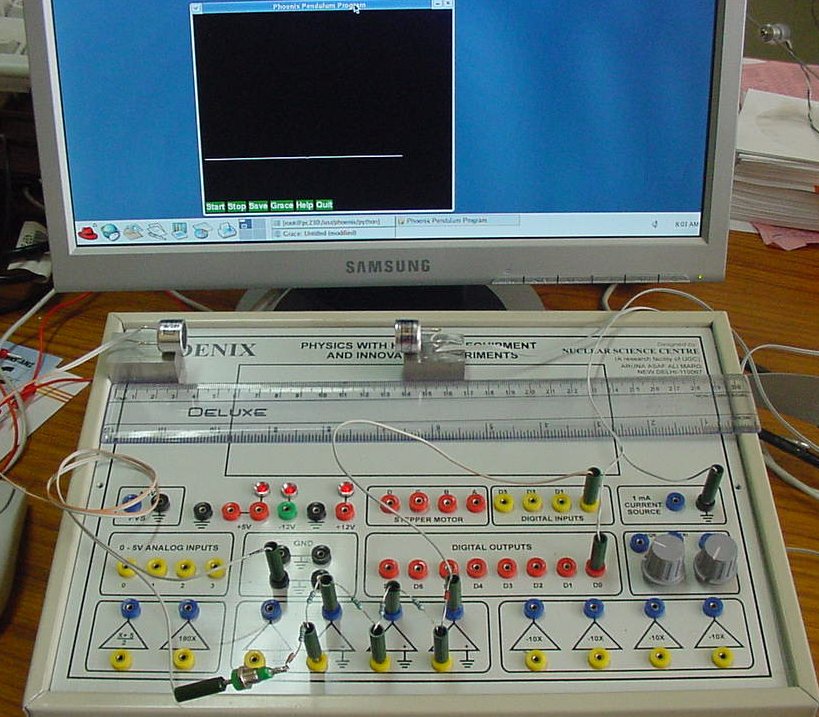
Velocity of sound can be obtained by measuring the time
it takes to travel a fixed distance. This can be done by a 40 KHz
resonant frequency piezo electric transmitter receiver pair. The setup
is shown below.

The transmitter piezo is connected to
digital output D0. The receiver piezo output is amplified around 1000
times and converted into a TTL signal that is fed to digital input D0.
The software sends a
single 13 microsecond wide pulse to the Transmitter that generates an
ultrasound wave that travels to the receiver through air. The program
waits for the Digital Input signal transition and calculates the time
the sound wave takes to reach from transmitter to receiver.
To eliminate errors due to delay in electronic
circuits, we measure the time for different distances and take the
difference to calculate the velocity.
| Distance (cm) |
Time (usec) |
Dist. Difference (cm) |
Time Difference |
Velocity (m/sec) |
| 5 |
226 |
|||
| 6 |
255 |
1 |
29 |
344.8 |
| 7 |
285 |
2 |
59 |
338.9 |
| 8 |
316 |
3 |
90 |
333.3 |
| 9 |
345 |
4 |
119 |
336.1 |
| 10 |
373 |
5 |
147 |
340.1 |
| 11 |
402 |
6 |
176 |
340.9 |
| 12 |
430 |
7 |
204 |
343.1 |
| 13 |
459.5 |
8 |
233.5 |
342.6 |
| 14 |
489 |
9 |
263 |
342.2 |
Method 2:
A metallic plate or gong is
connected to one of the
digital inputs (D0) . When it is hit by another metal object that is
connected to ground the input signal goes from HIGH to LOW. This
transition is detected by software
to mark the Start Time. The sound
generated by the collision is captured by a
microphone (It is easier to use a loudspeaker for this purpose). The
output of the microphone is amplified and given to
another digital input (D1) . The rising edge of this signal is used for
marking the Stop Time. Dividing the distance by the time interval
gives the velocity of sound. The same technique can be extended to
find the speed of sound in materials other than air.
| Distance (cm) |
Time (milli
seconds) |
Speed =
Distance / Time |
| 0 |
0.060 |
Delay caused
by the circuits (To be treated as an offset) |
| 10 |
0.350 |
344.8 |
| 20 |
0.645 |
341.8 |
| 30 |
0.925 |
346.8 |
| 40 |
1.218 |
345.4 |
| 50 |
1517 |
343.1 |
| 60 |
1810 |
342.8 |
60 microseconds is subtracted from each reading.
Related Experiments:
Beats
Resonance
Spectrum analysis